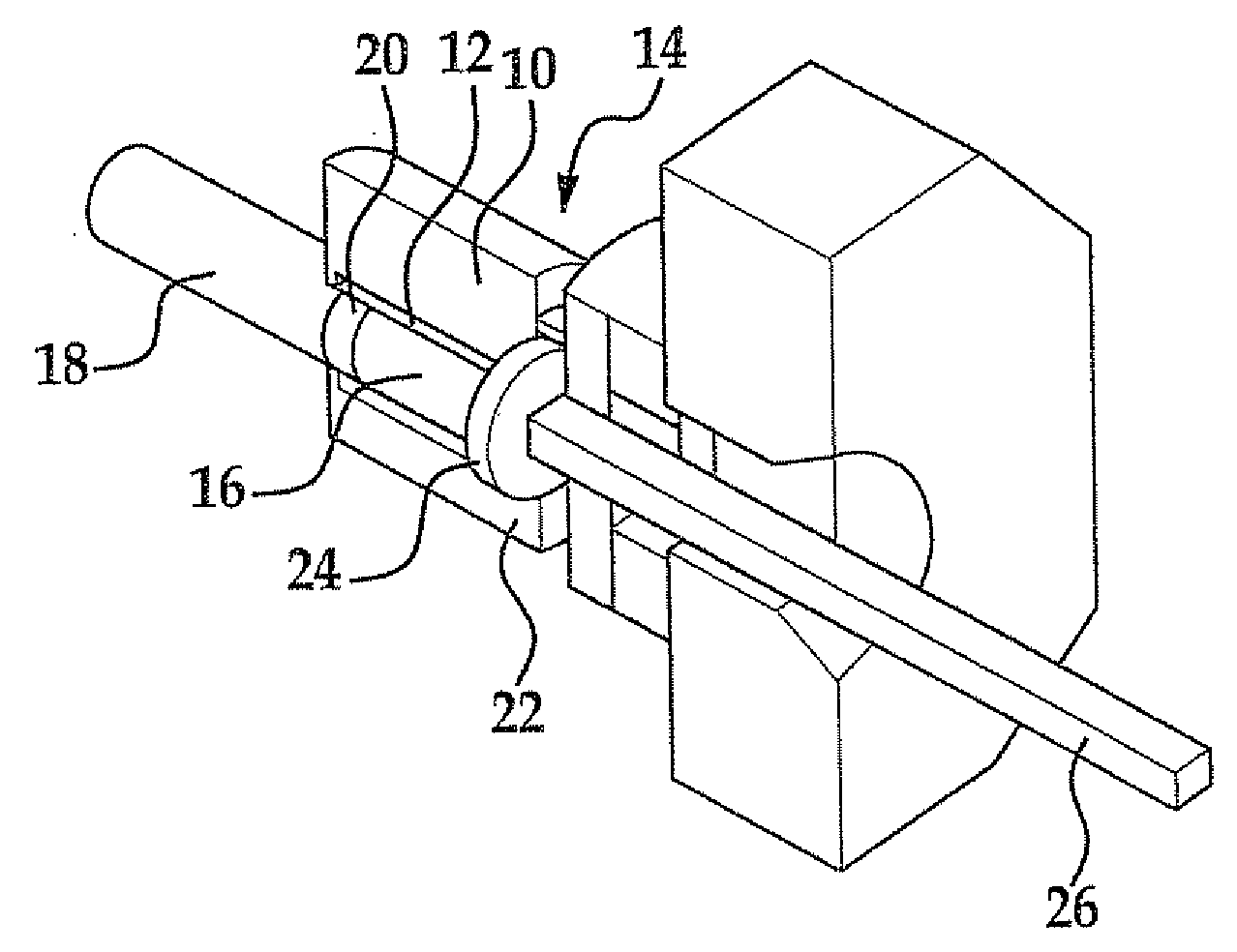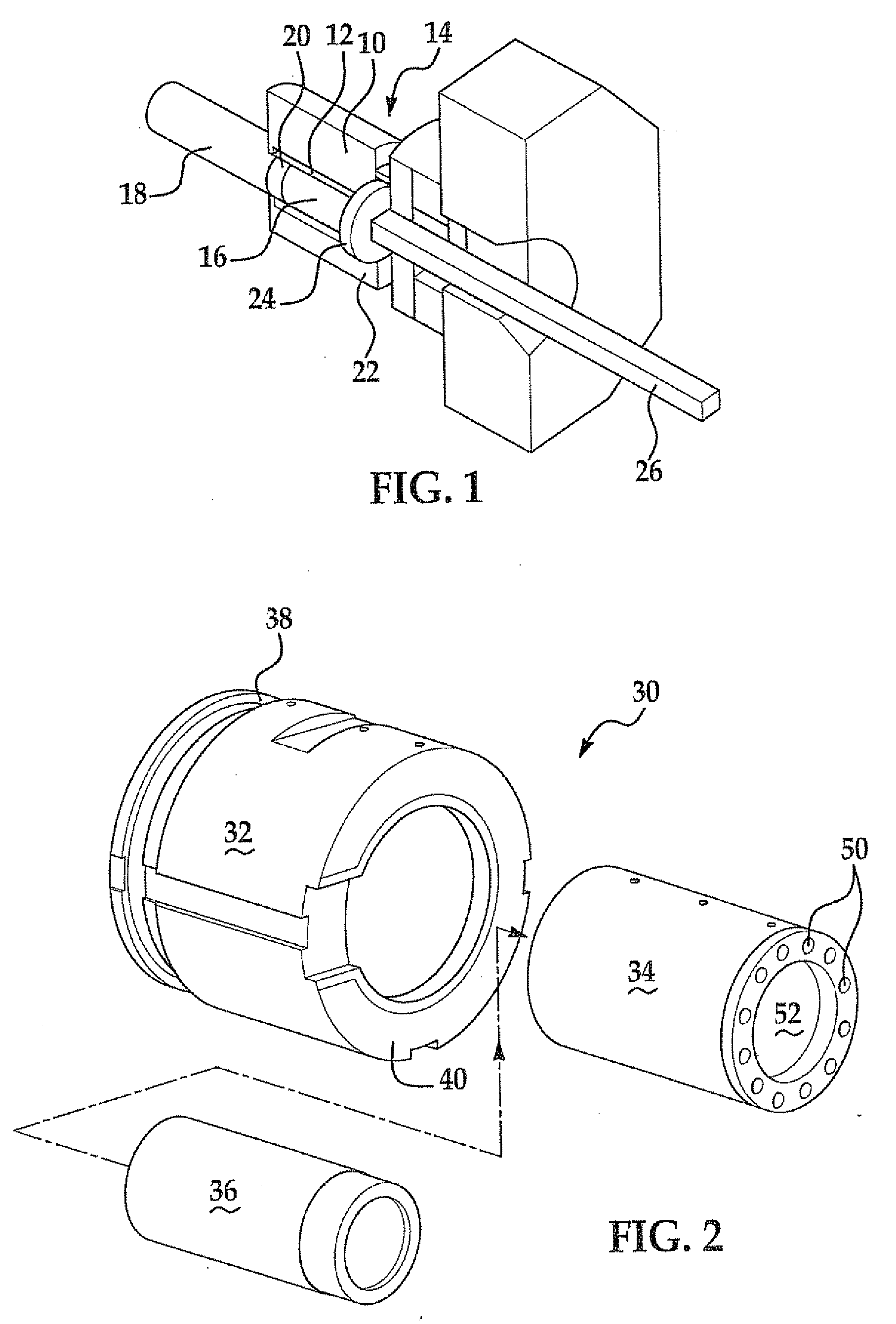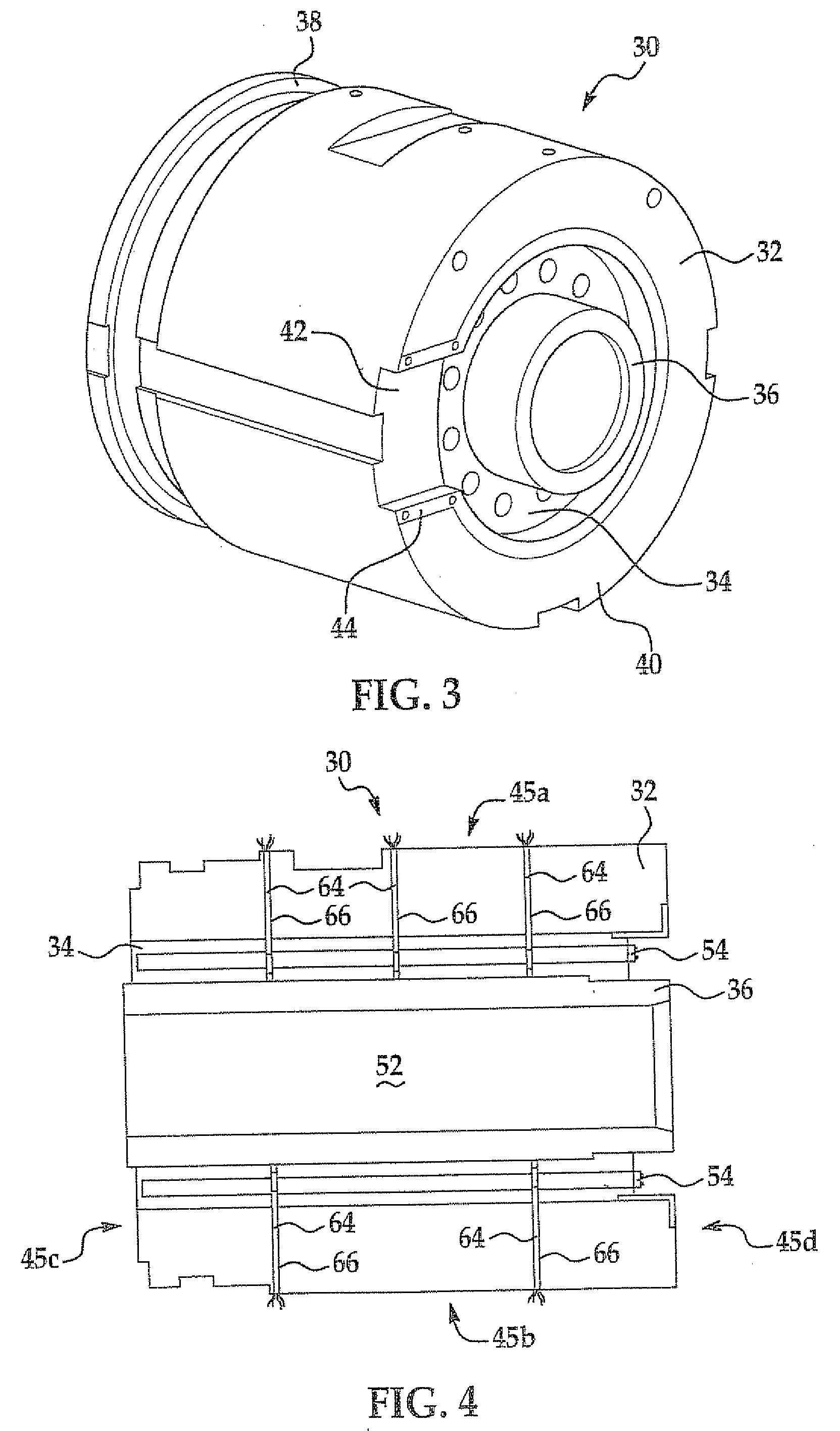Thermal Control Extrusion Press Container
a technology of extrusion press and container, which is applied in the field of subliners, can solve the problems of increasing the temperature at the top, reducing the efficiency of the container, and losing more heat than the center, so as to reduce the risk of dangerous overheating, reduce the likelihood of annealing and softening of the mantle, and improve the control
- Summary
- Abstract
- Description
- Claims
- Application Information
AI Technical Summary
Benefits of technology
Problems solved by technology
Method used
Image
Examples
Embodiment Construction
[0027] Various aspects of the present invention are described in detail where it is appreciated that the technology may find application for use in a metal extrusion press, particularly for aluminum extrusion.
[0028] As a general introduction to the type of apparatus in which the subliner of the present invention may be used, FIG. 1 shows a simplified standard arrangement of a metal extrusion press. The extrusion press generally comprises, but is not limited to, a mantle 10, with a tubular liner 12 which defines the container 14 for a billet 16. The extruding equipment also includes an extrusion ram 18, the end of which abuts a dummy block 20, which in turn abuts the billet 16. At the extruding end 22 of the apparatus, an extrusion die 24 is provided. Once the billet 16 is heated to the optimal extrusion temperature (i.e. 800-900° F. for aluminum), it is placed within the container 14 as surrounded by liner 12. The extrusion ram 18 and abutting dummy block 20 are advanced, thereby a...
PUM
 Login to View More
Login to View More Abstract
Description
Claims
Application Information
 Login to View More
Login to View More - R&D
- Intellectual Property
- Life Sciences
- Materials
- Tech Scout
- Unparalleled Data Quality
- Higher Quality Content
- 60% Fewer Hallucinations
Browse by: Latest US Patents, China's latest patents, Technical Efficacy Thesaurus, Application Domain, Technology Topic, Popular Technical Reports.
© 2025 PatSnap. All rights reserved.Legal|Privacy policy|Modern Slavery Act Transparency Statement|Sitemap|About US| Contact US: help@patsnap.com



